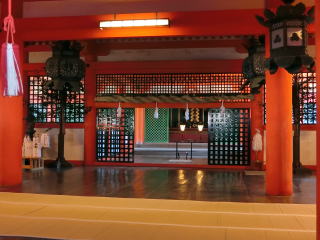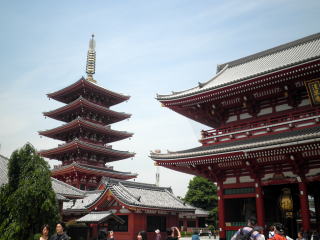1, Shintoism (Shinto)
Shintoism is called “Shinto”, which literally means the way of deity.
It is said that the foundation of Shinto dates back to ancient times in Japan and
gradually based on folk and nature faith with relation of politics by central and regional tribes.
Thus Shintoism is Japan's proper religion with 8 million deities for more than 2,000 years and
and also the heart of the Japanese based on mythology without sacred book nor founder.
to people.
Shintoism has its own purpose to protect community such as tribes and villages formed by
blood line and/or regional ties, meanwhile Buddhism principally saves the spirit of people
and nation. The number of registered shrines is about 88,000 in Japan and its believers
are 85 millions, 67% of 126 millions, total population in 2018.


Torii gate and sanctuary The inside of sanctuary
2, Buddhism (Bukyo)
Buddhism was founded by Gotama Siddhattha about 450 years before the birth of Jesus Christ
and introduced to Japan from China through Korean peninsula in 552 AC under the reign of
29th emperor KINMEI. Afterwards 40th emperor KANMU issued an edict to all the people
in 685 so as for them to have a Buddhist altar each home and believe in it.
Its philosophy is based on transmigration and salvation of the spirit, and composed
by three factors such as teachings of Buddhism, meditation and intellect.
Its basic idea is the law of cause and effect, that is principle of causality.
And if one is not liberated from earthly bondage, his or her spirit transmigrates infinitely
depending upon their conducts in the lives and mental status at death.
Buddhism preaches that this world is full of anguishes, and if one removes them from himself or
herself, one should be saved. God doesn't save people but only the conducts of each person
save himself or herself even if one doesn't become priest nor practice Buddhist asceticism.
The number of registered temples is about 77,000 in Japan and its believers are 88 millions,
70% of 126 millions, total population in 2018.


Buddhist gate and pagoda Buddhist altar with two statues
3, How to distinguish Shintoism from Buddhism
Shrines have a gateway(s), TORII with two vertical pillars and two horizontal bars, and
also have three things such as a round mirror, sword and ancient accessory "AGATAMA"
made of agate or jade, which the emperor has, too so as to prove his throne.
For reference the principal deity of Shintoism is Goddess, AMATERASU OMIKAMI, ancestor
of the emperor's family.
In the meantime, temples generally have a gate(s) of Chinese style, Buddha and/or Bodisattva
image(s) and pagoda where bone(s) or article(s) of Buddha are stored.
Concerning the functions of two religious institutions, shirines treat things in this world.
So Shintoist priests pray for good growth and health of babies and children, safe and
accident free construction works and so on. Meanwhile, temples treat things after death.
So Buddhist priests preside funeral ceremonies, anniversaries of the deceased and so forth.
--- end---